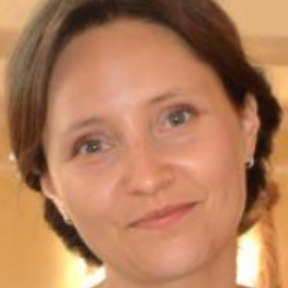International Journal of Modern Education and Computer Science (IJMECS)
IJMECS Vol. 8, No. 2, 8 Feb. 2016
Cover page and Table of Contents: PDF (size: 503KB)
Using Components of Corpus Linguistics and Annotation Tools in Sign Language Teaching
Full Text (PDF, 503KB), PP.14-21
Views: 0 Downloads: 0
Author(s)
Index Terms
Sign language, annotation tools, computer-assisted language learning, sign language corpora
Abstract
As an interdisciplinary group of people working on automatic sign language recognition, authors of the article developed concept how to facilitate the process of understanding Sign Language (SL) utterances by hearing learners. Concept is based on Polish SL, and was created in response to signals from the students who indicate understanding of SL messages as the hardest part of learning process, but can be easily adapted to other SLs. In comparison to speech corpora, SL databases constitute only a small fraction. From the other side thanks to the Internet there are available video recordings with native-signers, as well as tools which enable their analysis. Developed concept is based on using one of the available annotation tools used by professionals all over the world to describe SL corpora in SL classes. Making annotations helps students in understanding foreign language, corpora analysis helps to find objective rules governing SL, computer assisted language learning can be attractive way of study and Internet – great source of materials.
Cite This Paper
Katarzyna Barczewska, Jakub Gałka, Dorota Szulc, Mariusz Mąsior, Rafał Samborski, Tomasz J. Wilczyński, "Using Components of Corpus Linguistics and Annotation Tools in Sign Language Teaching", International Journal of Modern Education and Computer Science(IJMECS), Vol.8, No.2, pp.14-21, 2016. DOI: 10.5815/ijmecs.2016.02.02
Reference
[1]S. C. W. Ong and S. Ranganath, “Automatic SL Analysis-a survey and the future beyond lexical meaning” IEEE Trans. Pattern Anal. Mach. Intell., vol. 27(6) pp. 873—891, 2005.
[2]P. K. Pisharady and M. Saerbeck, “Recent methods and databases in vision-based hand gesture recognition: A review,” Comput Vis Image Und, vol. 141, pp. 152-165, 2015.
[3]H. Brugman and A. Russel, “Annotating Multimedia/ Multi-modal resources with ELAN”. In: Proceedings of LREC'04. European Language Resources Association, Lisbon: 2004, pp. 2065–2068.
[4]P. Tomaszewski Jak osoby słyszące mogą osiągnąć podstawy kompetencji komunikacyjnej w PJM? (How hearing can achieve basic PJM communication skills?) Paper presented during the training for teachers at the Deaf Institute, Warszawa, 12 Dec. 2001.
[5]C. J. Chen and P. L. Liu “Comparisons of learner-generated vs instructor-provided multimedia annotations,” The Turkish Online J. of Educational Technology, vol. 11(4), pp. 72—83, 2012.
[6]O. Crasborn and H. Sloetjes “Enhanced ELAN functionality for SL corpora” in: Construction and Exploitation of SL Corpora. 3rd Workshop on the Representation and Processing of SLs, Crasborn et al., Eds. Paris: 2008, pp 39—43.
[7]A. T. Dina and S. I. Ciornei “The Advantages and Disadvantages of Computer Assisted Language Learning and Teaching for Foreign Languages” Procedia Soc. Behav. Sci., vol. 76, pp. 248—252, 2013.
[8]S. Wallis “Annotation, Retrieval and Experimentation”, in: Annotating Variation and Change, Meurman-Solin, Nurmi, Eds. Helsinki: Varieng, 2007.
[9]T. Hughes, K. Nakajima, L. Ha, A. Vasu, P. Moreno, M. LeBeau “Building transcribed speech corpora quickly and cheaply for many languages” in Proceedings of the 11th INTERSPEECH 2010, pp 1914–1917, 2010.
[10]V. Pitsikalis, S. Theodorakis, C. Vogler, P. Maragos “Advances in phonetics-based sub-unit modelling for transcription alignment and SL recognition”, Gesture 11, pp. 1–6, 2011.
[11]C. Vogler and D. N. Metaxas “Toward Scalability in ASL Recognition: Breaking Down Signs into Phonemes”, in: Gesture Workshop, Braffortet et al. Eds. vol. 1739, 1999, pp. 211–224.
[12]P. Rutkowski, S. Łozińska, J. Filipczak, J. Łacheta,
P. Mostowski, “Korpus polskiego języka migowego (PJM): założenia – procedury – metodologia” (PJM Corpus: assumptions – procedures - methodology), in Sak (ed) Stan badań nad głuchotą w Polsce, PSG, Łódź. 2013.
[13]T. Johnston “Creating a Corpus of Auslan within an Australian National Corpus”, in Selected Proceedings of the 2008 HCSNet Workshop on Designing the Australian National Corpus. Cascadilla Proceedings Project, Haugh et al. Eds. Macquaire University, 2008, pp 87–95.
[14]T. Hanke “HamNoSys – The Hamburg Notation System for SLs”. http://www.aign-lang.uni-hamburg.de/dgs-korpus/tl-files/inhalt\_pdf/HamNoSys\_06en.pdf. Accessed 30 April 2014.
[15]M. Świdziński and D. Mikulska “Reprezentacja linearna teksu Polskiego Języka Migowego” (Linear representation of the Polish Sign Language text), in: Świdziński, Gałkowski (eds) Studia nad kompetencją językową i komunikacyjną niesłyszących (Studies of lingustic and communication skills of the Deaf). Zakład Graficzny UW, Warszawa, pp 31–59, 2003.
[16]K. Lausz, “O linearności i symultaniczności w Polskim Języku Migowym” (On the linearity and simultaneity in PJM), in: Świdziński, Gałkowski (eds) Studia nad kompetencją językową i komunikacyjną niesłyszących (Studies of lingustic and communication skills of the Deaf). Zakład Graficzny UW, Warszawa, pp 79–108, 2003.
[17]T. Johnston, “Auslan Corpus Annotation Guidelines. Centre for Language Sciences, Departament of Linguistics”, Macquarie University, Sydney Australia. http://media.auslan.org.au/attachments/AuslanCorpusAnnotation Guidelines\_Johnston.pdf. Accessed 22 April 2015.
[18]A. Partington, Patterns and Meanings: Using Corpora for English Language Research and Teaching. John Benjamins Publishing Company, Amsterdam, 1998.
[19]T. Hanke “iLex – A tool for SL Lexicography and Corpus Analysis”, in Proceedings of the third International Conference on Language Resources and Evaluation, Gonzalez et al. Eds. Vol. III. ELRA, Paris, 2002, pp 923–926.
[20]C. Neidle, “SignStream Annotation: Conventions used for the American SL Linguistic Research Project” http://www.bu.edu/asllrp/asllrpr11.pdf. Accessed 22 April 2015
[21]ELAN system Homepage at Max Planck Institute for the creation of complex annotations on video and audio resources. Retrieved April 22, 2015, from http://tla.mpi.nl/tools/tla-tools/elan/
[22]M. Garncarek, “Polski język migowy w nauczaniu słyszących: wskazówki metodyczne” (Polish Sign Language in teaching of the Hearing: methodological clues), in: Język w komunikacji 2 (Language in communication 2), Majkowski et al. Eds. ADJ, Częstochowa, 2013.
[23]P. Tomaszewski, M. Bielak, P. Rosik, Podstawy Polskiego Języka Migowego, Podręcznik do nauki Polskiego Języka Migowego dla kursantów (edycja robocza) (Basics of Polish Sign Language, Handbook for students) Zarząd Główny Polskiego Związku Głuchych, Warszawa, 2009.
[24]W. Y. Hwang, C. Y. Wang, M. Sharples, “A study of multimedia annotation of Web-based materials”, Computers & Education, vol. 48, pp. 680–699, 2007.
[25]W. B. Roby “What's in a gloss?”, Language Learning & Technology, vol. 2(2), pp. 94–101, 1999.
[26]D. Cresdee and T. Johnston, “Using Corpus-Based Research to Infrom the Teaching af Auslan (Australian SL) as a Second Language”, in: Teaching and Learning Signed Languages: International Perspectives and Practices, McKee et al. Eds. Palgrave Macmillan, 2014, pp 85–110.
[27]D. Biber, R. Reppen, E. Friginal “Research in Corpus Linguistics”, in: The Oxford Handbook of Applied Linguistics, Kaplan Ed. Oxford: Oxford University Press, 2012, pp 548–567.
[28]M. Yahyazade, M. M. Moghaddam, A. Attaran, “Towards an Interactive EFL Class: Using Active Learning Strategies”, IJMECS, vol. 6(5), pp. 8–14, 2014.





